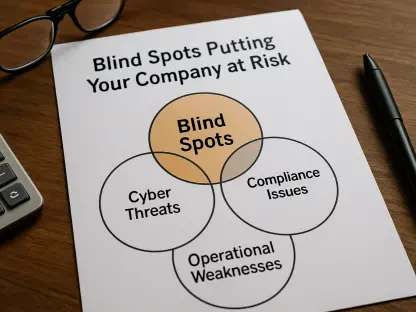In today’s hyper-connected world, the rise of sophisticated cyber threats poses significant risks to organizations worldwide. Recent trends in ransomware and supply chain attacks highlight the increasing complexity and frequency of cyber incidents, making robust cybersecurity measures more crucial than ever. Industry experts and cybersecurity leaders offer varying perspectives on these evolving threats and their potential impact on global security.
The Evolving Cybersecurity Landscape: Ransomware and Supply Chain Risks
The digital age continues to witness persistent threats from cybercriminals who exploit vulnerabilities within systems and networks. Recent reports reveal an alarming increase in both the sophistication and frequency of ransomware and supply chain attacks. These evolving threats necessitate a deeper understanding and robust defenses against potential cyber risks.
The Proliferation of Ransomware-as-a-Service (RaaS)
A New Era in Ransomware Operations
Ransomware-as-a-Service (RaaS) represents a significant shift in the execution of ransomware attacks. RaaS platforms allow less-skilled cybercriminals to launch sophisticated attacks by renting ransomware tools. Technologies such as the VanHelsing operation exemplify this rise, where affiliates pay a deposit and share the ransom proceeds with the operators. This model dramatically increases the scale and reach of ransomware attacks, complicating defense and response strategies.
How Double Extortion Tactics Are Changing the Game
Double extortion techniques involve not only encrypting a victim’s data but also threatening to release stolen data unless the ransom is paid. This tactic adds pressure on victims and increases the likelihood of payment. Case studies from various organizations demonstrate the widespread adoption of these tactics, challenging traditional cybersecurity frameworks and necessitating more comprehensive defense mechanisms.
Emerging Threats in Software Marketplaces
Cybercriminals are increasingly targeting software marketplaces, such as the VSCode Marketplace, to distribute malicious extensions. These platforms become vulnerable entry points for ransomware developers. Notable examples include extensions that use PowerShell scripts to deploy ransomware payloads, significantly challenging the conventional security measures employed by these marketplaces.
Collaboration Among Cybercriminal Groups
The trend of collaboration among cybercriminal groups is becoming more prevalent. Groups like HeadMare and Twelve have formed alliances, sharing resources and coordinating attacks. This growing cooperation among cybercriminal networks amplifies the threat landscape, complicating efforts to combat these attacks and necessitating more robust international cybersecurity strategies.
Unpacking Supply Chain Vulnerabilities
The Criticality of Securing Software Supply Chains
Software supply chains are increasingly lucrative targets for cyber attackers. Breaches such as the GitHub incident underscore the potential risks, highlighting the critical need to secure these chains. Industry practices must evolve to mitigate risks and protect the integrity of software supply chains against external threats.
The Impact of Supply Chain Attacks on Various Industries
Supply chain attacks affect various sectors differently, with significant implications for the tech, manufacturing, and healthcare industries. These attacks have broad economic and regulatory consequences, emphasizing the need for industry-specific security measures to address unique vulnerabilities within each sector.
Future-Proofing Against Supply Chain Exploits
Emerging technologies like blockchain, AI, and automation offer new avenues for enhancing supply chain security. These innovations provide promising solutions for mitigating risks and fortifying supply chains. Adopting these technologies can revolutionize traditional supply chain practices and significantly improve resilience against cyber threats.
The Geopolitical Dimension of Cyber Threats
State actors are sometimes implicated in cyber attacks, adding a complex geopolitical dimension to the threat landscape. Allegations of state involvement in cyber operations, as seen in cases like Black Basta, complicate attribution and legal responses. International cooperation becomes essential to address these multifaceted cyber threats effectively.
Synthesis and Best Practices for Mitigating Risks
The discussion reveals several critical insights: the rise of RaaS models, the adoption of double extortion tactics, vulnerabilities in software marketplaces, and the increasing collaboration among cybercriminal groups. To combat these threats, organizations are advised to implement comprehensive cybersecurity measures, engage in proactive threat detection, and adopt best practices for safeguarding supply chains.
Looking Ahead: The Continuing Evolution of Cyber Threats
Remaining vigilant against evolving cyber threats is paramount. Continuous advancements in ransomware and supply chain attack strategies demand proactive and adaptive security measures. Organizations must prioritize enhancing their cybersecurity protocols, staying updated on emerging threats, and cultivating a culture of continuous improvement to effectively safeguard against the dynamic cyber threat landscape.









